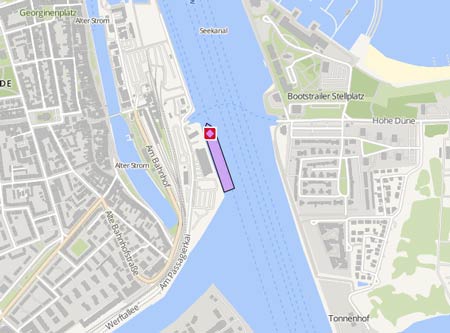CALEDONIAN ISLES
Course/Position
Latest ports
Latest Waypoints
Latest news
Ferry exited drydock
On Sep 17, the 'Caledonian Isles' exited drydock in Leith. The vessel will now undertake a programme of checks and familiarisation that will begin with a few days of trials on the Forth. In June, during sea trials, an issue with instability in pitch response affecting both controllable pitch propellers (CPP) wasidentified. Specifically, there was an inconsistent deadband between the pitch input requests and response fom the CPP’s. Since late July, work has taken place to address the issue and the ferry was now ready to test whether these works have been successful. The schedule was as follows: - Sep 17: vessel undocks and second set of alignment checks - Sep 18: harbour trials to assess pitch response - Sep 19 : sea trials on the Forth with Class in attendance Assuming all these works go to plan, the vessel will transit back to the west coast to allow the crew to undertake familiarisation trials at both Ardrossan and Brodick ports. These are necessary due to the length of time since the vessel operated in service on the route. Should the trials and crew familiarisation go to plan, timelines will be firmed up in due course
Investigations ongoing in Edinburgh
Due to ongoing investigations with the 'Caledonian Isles', operating on the route Ardrossan-Brodick in the Imperial Drydock of the Dales Marine Systems in Edinburgh, there is no scheduled service to Arran operating between the port until Sep 7. The ferries 'Glen Sannox' and 'Alfred' will operate the Troon Brodick-route until Sep 7 insted.
Ferry left Greenock to be drydocked in Leith
The 'Caledonian Isles' has left the James Watt Dock of the Dales Marine in Greenock on the evening July 25, as the ferry operator tries to find a solution to technical problems that have kept the ship out of service for more than a year and a half. The ferry was bound for dry dock in Leith, for repairs which could take between eight weeks and four months. Thge mechanisms that control the pitch of the propellers will have to be removed for further investigation. If that doesn't work, the retrofitting of a new system to improve the accuracy of the pitch control will be tried. This would take four more months. The 'Caledonian Isles' went out of service for its annual overhaul in January 2024. A hull deformity was discovered after repairs at the Cammell Laird shipyard in Merseyside, which has had a knock-on effect on the ferry’s return to service and prompted CalMac to seek to recover some of the almost £11 million in costs from the Birkenhead yard. CalMac intended to publish winter timetables soon and aim to give communities and customers certainty about service levels and vessel deployment during that period.
Upload News

